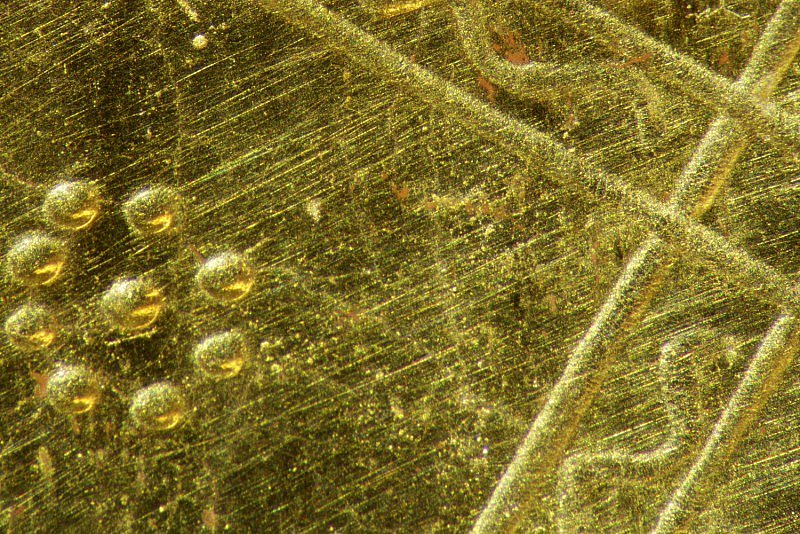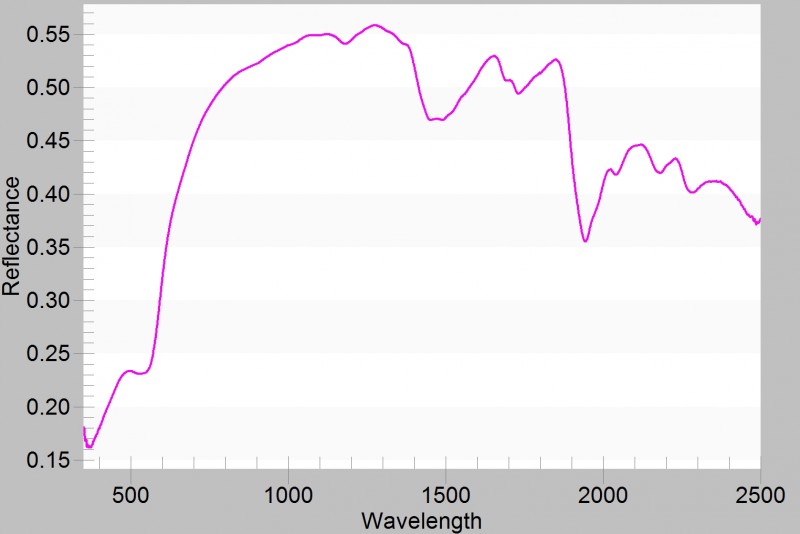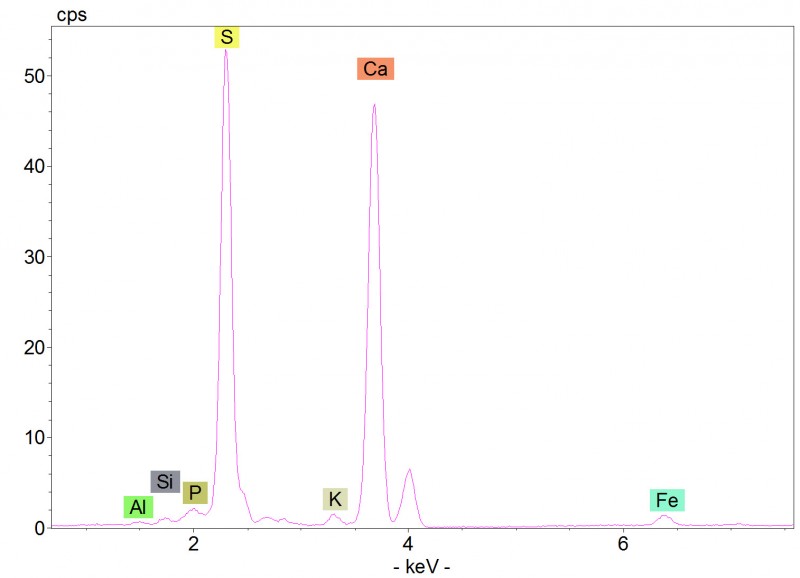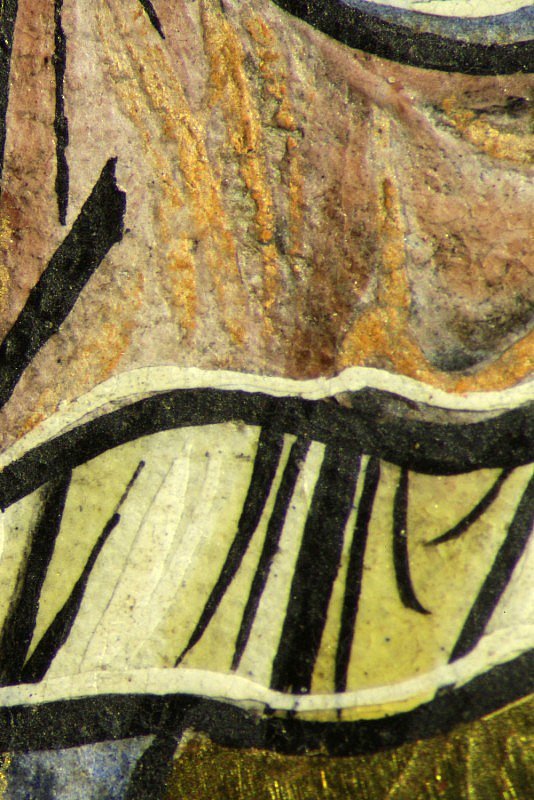Modelling of draperies
Artists' Techniques
The figures in this Psalter reflect the evolution from linear decorative fold patterns to a more naturalistic modelling of draperies. Gradations of colour are used to suggest volume and there is clear awareness of shadows and highlights, even though folds are still defined with thick black outlines, reminiscent of earlier modelling techniques.




Historiated initial D with David slaying Goliath (Psalm 52)
Pink tones in this folio are opaque and consist of a mixture of an organic red dye and gypsum (hotspot 2). Various red dyes were available in England at this time, such as Brazilwood, madder and kermes. A variety of red and pink hues can be obtained by controlling the amount of alum added to these dyes.
The modelling of draperies is particularly dynamic in this folio. David’s mantle is modelled over a pink base layer that contains an insect-derived dye, with red lead highlights. The inner part of the mantle is painted with ultramarine blue. The tunic is modelled with a yellow glaze over a white base layer of chalk (hotspot 3). White lead highlights and thick black outlines further define the folds.
